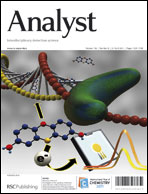In the present work, for the first time, investigation of the initial fast step of reaction between 1,1,1-trichloro-3-methyl-3-phospholene (TCMP) and methanol was studied under a dry inert atmosphere by a newly constructed CSF apparatus by means of a further development in the configuration of the previous stopped-flow spectrophotometer (SFS). Hence, it was necessary to make many changes to the stopped-flow apparatus: replacement of the spectrophotometer amplifier with a conductance amplifier and the use of a conductivity cell to replace the optical one. The conductivity cell was made of polyethylene capillary tube (1 mm internal diameter; i.d.) and its inside dimensions were 1 mm i.d. × 3 mm long. Two tube electrodes which are made of stainless steel (0.8 mm i.d. × 14 mm long) were fixed at opposite ends of the observation cell and their outer surfaces were connected to the conductivity bridge amplifier by the two lead wires. The mixer was a 3-way Teflon valve and the distance between the mixer and the end of the observation cell was 30 mm. For each run, at least 24 µL of solution was required for a typical trace with a dead time of about 5 ms. Because of the extreme sensitivity of TCMP to moisture, the stopped-flow (CSF) apparatus was used inside a glove bag under a dry nitrogen atmosphere. Kinetic parameters for pseudo first-order reaction involving kobs = 30 s−1 at 22 °C and activation energy Ea = 13.55 KJ mol−1 were successfully calculated for the initial fast step of the reaction between TCMP and methanol at 22 °C.

You have access to this article
 Please wait while we load your content...
Something went wrong. Try again?
Please wait while we load your content...
Something went wrong. Try again?


 Please wait while we load your content...
Please wait while we load your content...